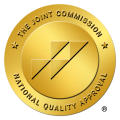The Role of Pharmacology
in Addiction Treatment
Article Contents
What is Pharmacology?
Also known as pharmacotherapy, pharmacology is the study of drugs and how they interact with living organisms. These interactions between the drug and living tissue, sometimes called “drug actions,” involve a detailed understanding of:1
- What the drug is (type of drug, its chemical make-up)
- How it impacts emotional, mental, and physical wellbeing
- How the drug is being administered
- How the drug is absorbed by the body
- Characteristics of the individual taking the substance
A History of Clinical Pharmacology
The roots of clinical pharmacology can be traced back to the Middle Ages (5th-15th centuries), where books called pharmacopeias were filled with information on herbalism and natural substances like plant extracts.
Small advancements were continually made to the pharmacotherapy field over the centuries. The 17th century saw the translation of many early pharmacology texts and their information regarding plant remedies by the English physician Nicholas Culpeper. Most pharmacological developments in the 18th century can be attributed to William Withering, who was the first systematic investigator of digitalis’s bioactivity.2
It was not until the mid-1800s that pharmacology would see further advancement, spurred on by the resurgence in interest in biomedical research. The first pharmacology department was established by Rudolf Buchheim in 1847, with the first university pharmacology program created in 1905. It was only in the last 170 years or so that pharmacotherapy has truly advanced as a scientific practice.3
Why Is Pharmacokinetics Important to Addiction?
Pharmacokinetics is a branch of pharmacology specifically exploring how molecules act and behave inside the body. Not to be confused with pharmacodynamics (exploring how the molecule impacts the living organism), pharmacokinetics studies everything from which tissues absorb a molecule to how quickly it’s eliminated from the body. It is critical for substance use disorder treatment as it helps care providers select medications less likely to cause adverse reactions.
Some of the key areas in pharmacokinetics study include: elimination, metabolism, absorption, and distribution.4
Role of Pharmacology in Addiction Treatment
Pharmacotherapy can play a critical role in addiction therapy and treatment, where medications are often prescribed to relieve withdrawal and craving symptoms or reduce the likelihood of relapse in the future by limiting an illicit drug’s effects.
Phases of Treatment
There are usually three core stages of recovery in the course of addiction treatment and drug rehab.
Detoxification
addiction detox is almost always the first step in any rehabilitation program. Before someone struggling with substance use disorder can be given medications to help with addiction, it is essential to clear remaining drugs from the system so they cannot interfere or diminish the impact of medication.
For some drugs, detoxification may involve a schedule of gradual tapering instead of going “cold turkey.”
Initial Recovery
Initial recovery and relief from peak cravings and withdrawal symptoms can take anywhere from days to weeks to subside, depending on the length of substance abuse, the intensity of abuse, and the type of drug. Once beyond the initial detox stage, care providers may begin exploring pharmacotherapy options to reduce cravings and block the effects of the addictive substance.
Relapse Prevention
The last stage of addiction treatment takes the form of relapse prevention. Care providers may prescribe drugs to continue blocking the positive effects of drugs, or which alternatively cause negative side effects when taken alongside the substance (like alcohol with disulfiram).
Aspects of Pharmacology
There are two main aspects of pharmacotherapy, as already briefly mentioned above: pharmacokinetics and pharmacodynamics.
- Pharmacokinetics studies how a living organism impacts an additional distinct molecule. This area of study refers to drug metabolism, distribution, absorption, and excretion of drugs.
- Pharmacodynamics studies how a distinct molecule impacts a living organism. It refers to the chemical, biochemical, and physiological effects that drugs can have on our bodies. It also examines the mechanism of a drug’s action or how it creates changes in the body.
Types of Approaches to Addiction Treatment

Mental Health
Care providers must know their patient’s history so they can identify any cognitive deficits and mental health issues that may exist and impact treatment. Comorbid psychiatric conditions (depression, anxiety, bipolar disorder) that are undisclosed at the time of treatment can interfere with recovery from addiction and can also lead to adverse interactions with medication-assisted treatment.
Individual Differences
Most care providers will build their treatment programs based on trauma-informed care (TIC) to help identify and provide support for vulnerability factors. Sex differences, both in personal experience and interactions with drugs, may influence the treatment as well.
Agonist and Antagonist Medications
When it comes to medication-assisted treatment there are two main approaches: agonist or antagonist medications. Agonist medication-assisted treatments function by attaching to receptors in the brain, stimulating the reward pathways by mimicking the drug reward without the negative effects of the original addictive drug. Methadone and buprenorphine are examples of agonist medications.
Antagonist MAT features substances that work by blocking the receptors in the brain from connecting with the substances that would release neurotransmitters that lead to a high. Commonly used antagonist medications include naloxone and naltrexone.
Types of Addiction Treated with MAT
While many might think addiction treatment steers clear of drugs, there are many medications that can aid recovery and addiction cravings.
Stimulants
While research regarding medication-assisted treatments for addiction to stimulants (like methamphetamine, amphetamines, and cocaine) is ongoing, studies suggest bupropion, modafinil, disulfiram, and topiramate may show promise.5
Nicotine
Many of us are familiar with the idea of “the patch” or “nicotine gum,” but nicotine MAT also comes in the form of inhalers, lozenges, and nasal spray. Bupropion and varenicline also serve as MAT for nicotine addiction.6
Alcohol
As one of the most researched areas of addiction treatment, there are currently three FDA-approved medications on the market for treating alcohol dependence: naltrexone, acamprosate, and disulfiram.
Opiates
When it comes to MAT for opioid addiction, the most commonly prescribed medications are methadone, buprenorphine, and naltrexone. Additionally, the drug naloxone is prescribed to help immediately reverse the effects of an opioid overdose.
A Further Look at MAT for Substance Abuse
Medications for Alcohol Dependence Used in MAT
As touched upon in the previous section, there are numerous medications that are federally approved to help provide support and relief as an individual enters recovery from an alcohol use disorder.7
- Naltrexone: Naltrexone targets alcohol cravings by reducing the “reward” associated with drinking. In other words, when you drink after taking naltrexone, naltrexone suppresses the “positive” effects of drinking, making you less inclined to drink in the future. Naltrexone is also often used for treating opioid and meth withdrawal through the same mechanism of action.
- Disulfiram: Disulfiram also helps reduce alcohol cravings by stimulating a range of unpleasant side effects when combined with alcohol. These negative side effects can include nausea and vomiting, headaches, and impaired vision.
- Acamprosate: Acamprosate is a medication used to help relieve cravings and withdrawal symptoms from alcohol use disorder.
Medications for Opioid Dependence used in MAT
Several medications can be used to ease the recovery for opioid addiction as well.7
- Buprenorphine: As a partial opiate antagonist medication, buprenorphine helps manage cravings and lessen symptoms of withdrawal for opioid withdrawal, whether mild or severe.
- Methadone: Methadone is a full opioid agonist medication known for its long-acting nature. It helps patients through the worst parts of opioid withdrawal and can help stabilize those going through opioid use disorder following recovery.
- Naloxone: Naloxone is a powerful medication that rapidly reverses the effects of an opioid overdose.
Resources
http://scihi.org/nicholas-culpeper/
https://www.uni-giessen.de/faculties/f11/facilities-en/rbi-en/about-us/history
https://www.news-medical.net/life-sciences/What-is-Pharmacokinetics.aspx
https://pubmed.ncbi.nlm.nih.gov/31008728/
https://cdn.ymaws.com/www.ohiochc.org/resource/resmgr/webinars/10_2020_MAT.pdf




